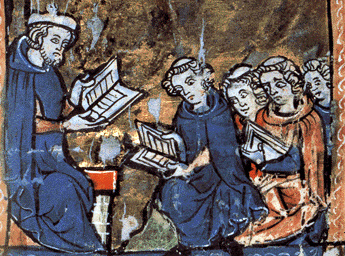Lausavísur from Haralds saga Sigurðarsonar §
Edited by Kari Ellen Gade and Diana Whaley
þat ‘that’
Closehringkofl ‘the ring-cowl’
hringkofl (noun m.): [ring-cowl]
[6] hringkofl inga ‘the ring-cowl of the king’: Inga is taken here as a noun meaning ‘king’ (see LP: ingi and Sturl Hrafn 15/4); it could also be a variant of the name Yngvi, which is used in poetry for various legendary kings and heroes (see LP: ingi, Yngvi). Skj B treats it as a pers. n. (of a sea-king) and translates hringkofl Inga ‘the ring-cowl of Ingi’ as ‘ring byrnie’ (ringbrynjen). However, hringkofl ‘ring-cowl’ does not appear to be part of a kenning; rather, it most likely denotes a specific type of protective armour. Kufl ‘cowl’ was a combination of a cloak and a hood worn by monks, and protective armour made from iron rings covering the head and shoulders and worn beneath helmets is known from ON and continental sources (see Falk 1914, 169-70). See also ‘Rüstung’ in RGA 25, 446.
Closeinga ‘of the king’
[6] hringkofl inga ‘the ring-cowl of the king’: Inga is taken here as a noun meaning ‘king’ (see LP: ingi and Sturl Hrafn 15/4); it could also be a variant of the name Yngvi, which is used in poetry for various legendary kings and heroes (see LP: ingi, Yngvi). Skj B treats it as a pers. n. (of a sea-king) and translates hringkofl Inga ‘the ring-cowl of Ingi’ as ‘ring byrnie’ (ringbrynjen). However, hringkofl ‘ring-cowl’ does not appear to be part of a kenning; rather, it most likely denotes a specific type of protective armour. Kufl ‘cowl’ was a combination of a cloak and a hood worn by monks, and protective armour made from iron rings covering the head and shoulders and worn beneath helmets is known from ON and continental sources (see Falk 1914, 169-70). See also ‘Rüstung’ in RGA 25, 446.
Closebôru ‘moved’
3. bera (verb; °berr; bar, báru; borinn): bear, carry
[7] bôru sik ‘moved’: Earlier eds emend to the negated brut (bru-at) and read ‘goslings of wounds did not move hungrily’.
Closesik ‘’
sik (pron.; °gen. sín, dat. sér): (refl. pron.)
[7] bôru sik ‘moved’: Earlier eds emend to the negated brut (bru-at) and read ‘goslings of wounds did not move hungrily’.
Closeþat ‘that’
CloseTeaching text: text section
Here you can see a piece of text. Clicking on words in the text will show you the dictionary headword, grammatical information and notes on how the word is used.
You should pay careful attention to the explanation of each word. You can test your knowledge using the translation and other exercises.
In some cases there may be audio of a modern Icelandic rendition of the text on this page.
